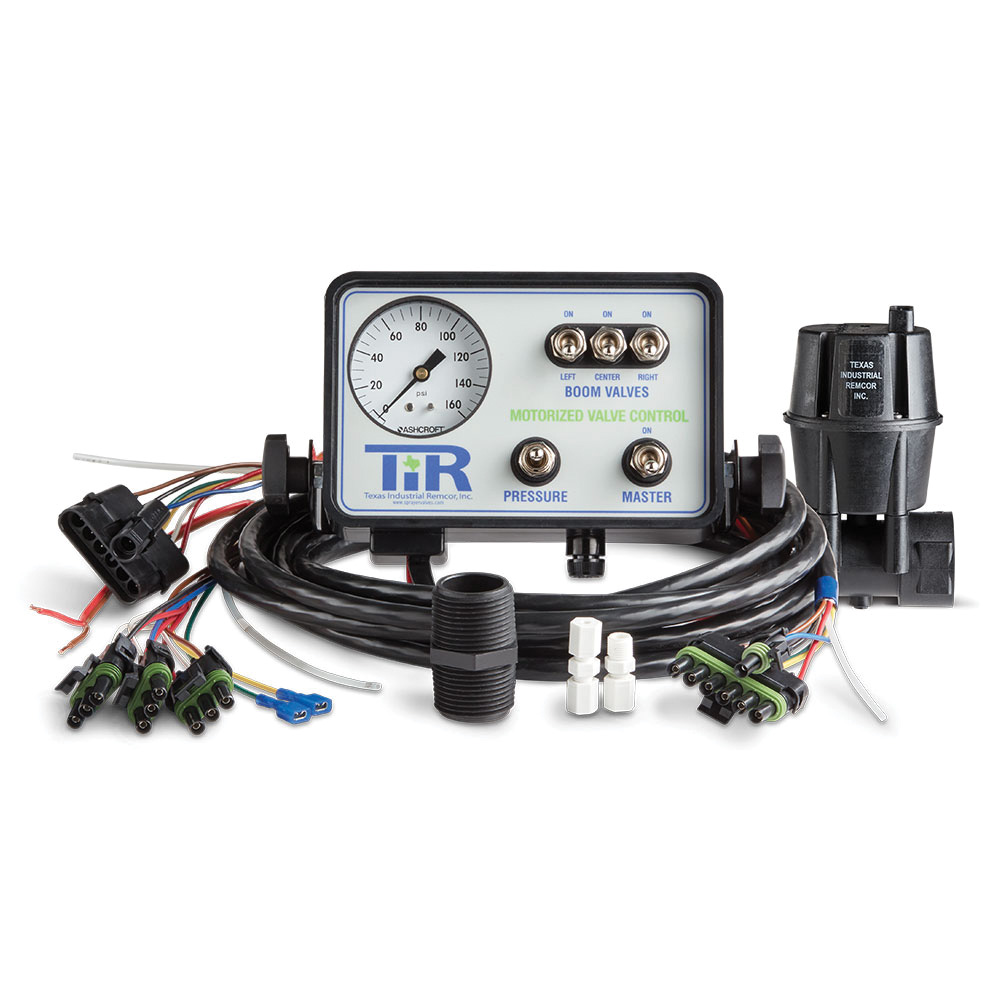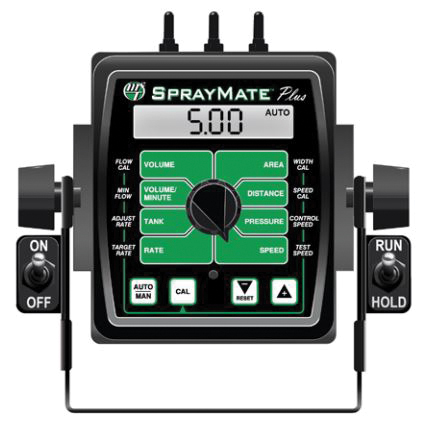When it comes to sprayers, planters, and other liquid application equipment, choosing between automatic and manual rate control is one major aspect that has a massive impact on the convenience and efficiency of your system. Each option offers advantages depending on your operation's needs, equipment, and budget. This blog will break down the key differences between these systems, how each one works, and the pros and cons of both to help you make an informed choice between the two.

What is Rate Control?
At its core, rate control refers to how the system manages the volume of liquid applied per acre. Precise control ensures that chemicals are applied at the correct rate, avoiding under-application that could harm yields or over-application that could waste inputs and increase costs.
All rate control systems fit into two primary categories: manual and automatic control. The fundamental difference lies in how the system adjusts flow rates as ground speed changes. While automatic systems adjust the flow in real-time as you change speed, manual systems require you to adjust flow settings yourself. Let's dive deeper into each approach.
Manual Rate Control: Simplicity at a Lower Cost
Manual systems rely on the operator to adjust the application rate manually, either by changing the pressure in the system with a regulating valve or by controlling the speed of the pump motor/drive. This setup is typically much simpler and budget-friendly but requires more hands-on monitoring and manual adjustment during operation.

How Manual Rate Control Works
Manual rate control systems achieve the desired output primarily through two methods: varying pressure with a regulating valve or adjusting the speed of a pump motor/drive. Both approaches require hands-on operation and frequent adjustments to maintain accurate application rates.
The first method involves varying pressure using a manual regulating or bypass valve. In this setup, the operator sets the system’s pressure to match the desired application rate. For example, you might calculate that at 5 mph, 28 PSI is needed to deliver 10 gallons per acre (GPA). However, if your speed increases to 6 mph, you must manually increase the pressure to 33 PSI to maintain the same 10 GPA (these numbers are just examples). This method demands careful pre-calculation of operating pressures for different speeds, along with frequent adjustments throughout the application process.
The second approach involves using a mechanism to adjust the speed of the pump. Two common methods are using a rheostatic control to adjust the RPM of a 12-volt electric pump or a PWM valve to vary the flow of a hydraulic pump. These systems allow the operator to increase or decrease the pump’s speed to control flow rates.
While the flow can be adjusted in real-time, it still requires manual input based on changes in ground speed. If you speed up, you need to increase the pump RPM to keep the application rate consistent, and if you slow down, you must decrease the RPM to avoid over-application.
For more details, you can examine the manual rate control plumbing diagrams here.
Pros and Cons of Manual Rate Control
Pros:
- Lower upfront cost: Fewer components mean a more affordable setup.
- Simplicity: Easier to install and maintain with fewer parts to troubleshoot.
- Flexible with smaller operations: Suitable for fields where speed changes are minimal or predictable. Best option for skid sprayers or turf sprayers that utilize a spray gun rather than a boom.
Cons:
- Labor-intensive: Requires constant monitoring and adjustment, which can be challenging when the operator has multiple things to monitor in the sprayer/tractor cab.
- Inconsistent applications: Greater risk of over- or under-application due to human error
- Less efficient: Not ideal for operations where speed frequently changes, like irregular terrain or fields with obstacles. Not ideal for prescription applications.
You can see more information about setting up simple and cost-effective manual rate control in this article about planter fertilizer systems.
Automatic Rate Control: Precision and Convenience
Unlike manual rate control systems where the operator constantly must monitor speed and adjust as best they can to changes in the field, automatic rate control systems take the guesswork out of fertilizer and chemical applications. These systems are designed to automatically adjust flow rates as ground speed changes. This type of control is especially necessary in larger operations requiring maximum efficiency.

How Automatic Rate Control Works
Automatic rate control systems rely on sensors, controllers, and flow meters to monitor both ground speed and flow rate in real-time. As the system detects changes in speed—whether from variations in terrain or adjustments made by the operator—it automatically adjusts an electronic regulating valve (or PWM valve/motor) to maintain a consistent application rate, typically measured in gallons per acre (GPA).
These systems remove the need for manual input during the application, which frees up the operator to check for plugged nozzles, monitor wind conditions, and obviously steer. Many automatic rate control systems are integrated with GPS or in-cab monitors to enhance precision further.
If you want more information then check out our article on the components needed for automatic rate control on a sprayer.
Pros and Cons of Automatic Rate Control
Pros:
- Highly accurate applications: Reduces waste and ensures nutrients or chemicals are applied at the correct rate across the entire field.
- Increased efficiency: Operators can focus on other aspects of operation instead of manually adjusting settings.
- Ideal for large-scale operations: Handles varying speeds and field conditions seamlessly.
Cons:
- Higher cost: Advanced components like sensors, monitors, and GPS integration increase the upfront investment.
- More complex setup: May require professional installation and calibration
- Potential for downtime: Malfunctioning sensors or controllers can be more difficult to troubleshoot and halt operations until repaired.
Conclusion: Which System is Right for You?
Choosing between manual and automatic rate control depends on the specific needs of your operation. Manual systems offer a cost-effective solution for small farms, acreages, pastures, sports fields, etc. Basically, anywhere you can maintain a fairly constant speed on level terrain. On the other hand, automatic systems are ideal for large-scale or precision farming operations where efficiency and accuracy are paramount, though these systems come with higher upfront costs and more complex maintenance.
No matter which route you choose, Dultmeier Sales can help you identify the system that will meet your needs. Give us a call today and we’ll happily help you determine the best option for your operation.
⇒ Browse the Different Rate Control Options Available At Dultmeier Sales

Tech Ag & Industrial Sales
Shane Blomendahl is a tech sales veteran at Dultmeier Sales with over 10+ years of experience in liquid handling products covering several industries and applications.












